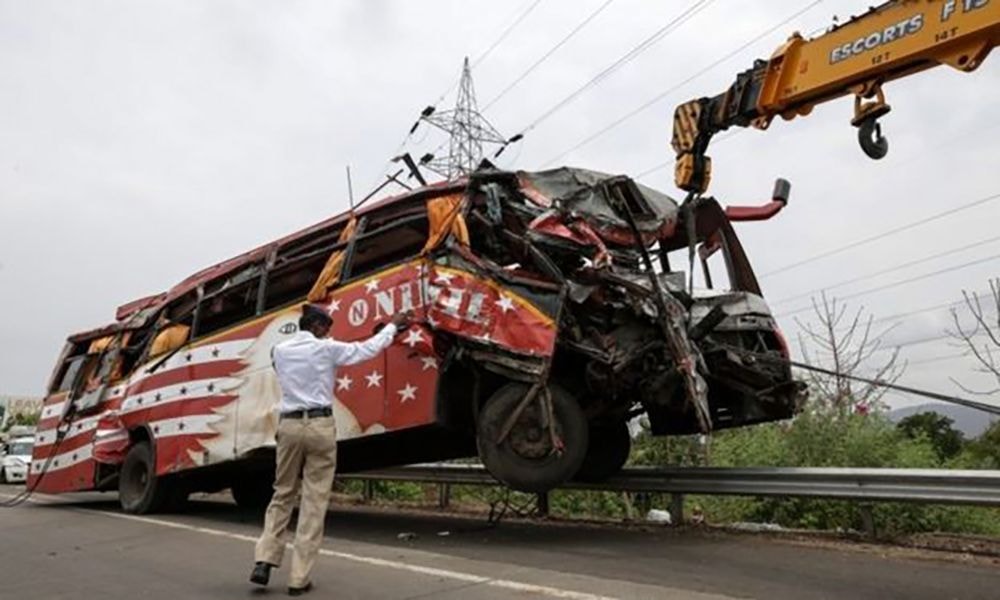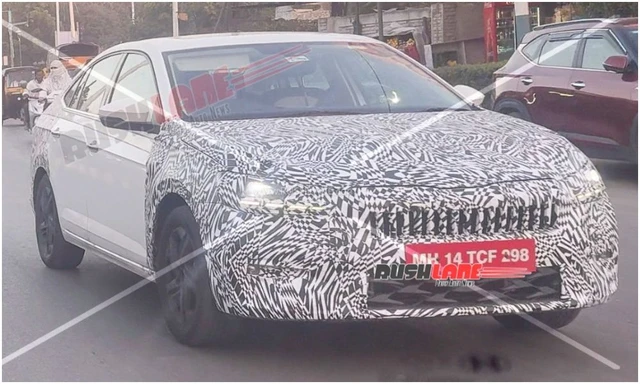Government Will Use e-DAR Based Heatmap App To Combat Road Fatalities In India

- India records the highest number of road deaths worldwide, accounting for 1.5 lakh fatalities in 2021 (11% of global road fatalities).
- eDAR application registers over seven lakh accidents, providing real-time data and color-coded heatmaps for actionable insights.
- Ministry of Road Transport and Highways sets the goal to halve road deaths by 2030.
In a significant move to tackle the alarming rate of road deaths in India, the government has implemented an IT application aimed at collecting real-time data on road crashes. This application generates live colour-coded heatmaps, offering detailed insights into accidents occurring on as small as 500-meter stretches across the country. By equipping states and local authorities with this platform, the government hopes to provide actionable guidance and reduce fatalities on the roads. With all states and Union Territories adopting the electronic detailed accident report (eDAR) application, over seven lakh accidents, have already been registered on this platform. India has the dubious distinction of having the highest number of road deaths worldwide, accounting for 11% of all road fatalities. In a determined effort to reverse this disheartening trend, the government has set a goal of halving road deaths by 2030.
Also Read: Maharashtra Government Takes Action To Curb Underage Driving
During a recent meeting of the NCR Planning Board on road safety and trauma care, the Ministry of Road Transport and Highways provided comprehensive details about the eDAR system. The central and state government agencies, including police, health, transport, and road-owning authorities, have actively participated in this initiative. To ensure localized data collection, the entire area has been divided into 2 km2 grids, each assigned a unique grid ID. Utilizing Geographic Information System (GIS) tool, the number of crashes in each grid is documented. The eDAR application employs an interface that divides roads into 500-meter segments. Each segment is then associated with distinct colours that depict the severity of accidents. Moreover, the analysis module offers details such as the total number of crashes, individuals, and vehicles involved, as well as the time and causes of accidents, including factors such as speeding and drowsiness.
Also Read: Will Bring New Vehicles That Run On Ethanol: Nitin Gadkari
The process of data collection begins with the police arriving at the accident site and promptly inputting all relevant details into the eDAR application. Subsequently, the police alert the transport and health departments, along with the relevant road-owning agency, to provide further information. This approach ensures that the accident data is promptly captured and disseminated to the appropriate authorities for swift action. In addition to the eDAR system, the Ministry of Road Transport and Highways has revealed that an application focusing on deep analytics of road accident data is being developed by the Indian Institute of Technology (IIT) in Madras. This new application will incorporate Artificial Intelligence (AI) and Machine Learning (ML) techniques to enhance data analysis and derive valuable insights. Furthermore, the ministry has established timelines for mandatory provisions such as Advanced Driver Assist Systems and Alcohol Ignition Interlock Devices in vehicles by 2030, underlining their commitment to comprehensive road safety measures.
Trending News
Latest News
 car&bike Team | Dec 14, 2025Top-Spec Tata Sierra Accomplished, Accomplished+ Prices RevealedRegardless of the powertrain combination chosen, all Tata Sierra Accomplished+ trims cost upwards of Rs 20 lakh (ex-showroom).2 mins read
car&bike Team | Dec 14, 2025Top-Spec Tata Sierra Accomplished, Accomplished+ Prices RevealedRegardless of the powertrain combination chosen, all Tata Sierra Accomplished+ trims cost upwards of Rs 20 lakh (ex-showroom).2 mins read car&bike Team | Dec 13, 2025Skoda Slavia Facelift Spied Testing Again Ahead Of DebutThe facelifted Slavia is expected to debut in 2026 as Skoda-VW India looks to refresh its India 2.0 range.1 min read
car&bike Team | Dec 13, 2025Skoda Slavia Facelift Spied Testing Again Ahead Of DebutThe facelifted Slavia is expected to debut in 2026 as Skoda-VW India looks to refresh its India 2.0 range.1 min read car&bike Team | Dec 13, 20252026 MG Hector Facelift Interior Previewed Ahead Of DebutLatest teaser video of the upcoming Hector facelift suggests minimal cosmetic changes to the interior as well as reveals a new alloy-wheel design.1 min read
car&bike Team | Dec 13, 20252026 MG Hector Facelift Interior Previewed Ahead Of DebutLatest teaser video of the upcoming Hector facelift suggests minimal cosmetic changes to the interior as well as reveals a new alloy-wheel design.1 min read Jaiveer Mehra | Dec 13, 2025Passenger Vehicle, Two-Wheeler Sales Surge In November 2025: SIAMBoth segments reported a growth in the region of 20 per cent, though year-to-date sales growth in FY2026 was notably flatter at around 3 per cent.1 min read
Jaiveer Mehra | Dec 13, 2025Passenger Vehicle, Two-Wheeler Sales Surge In November 2025: SIAMBoth segments reported a growth in the region of 20 per cent, though year-to-date sales growth in FY2026 was notably flatter at around 3 per cent.1 min read car&bike Team | Dec 12, 2025Nissan Entry MPV Design To Be Unveiled On December 18New MPV to be the first of three new models for India by Nissan, alongside the Tekton and a three-row SUV.1 min read
car&bike Team | Dec 12, 2025Nissan Entry MPV Design To Be Unveiled On December 18New MPV to be the first of three new models for India by Nissan, alongside the Tekton and a three-row SUV.1 min read Jaiveer Mehra | Dec 12, 2025New Mini Convertible Launched At Rs 58.50 LakhDrop-top variant of the iconic Cooper hatchback available in a single Cooper S spec.1 min read
Jaiveer Mehra | Dec 12, 2025New Mini Convertible Launched At Rs 58.50 LakhDrop-top variant of the iconic Cooper hatchback available in a single Cooper S spec.1 min read
 Janak Sorap | Dec 11, 2025Harley-Davidson X440 T First Ride Review: Smarter and SharperHarley-Davidson has taken the X440 and given it a more focused and engaging twist. The result is the X440 T—essentially the same platform but updated in areas that give the motorcycle more appeal and riders more thrill.5 mins read
Janak Sorap | Dec 11, 2025Harley-Davidson X440 T First Ride Review: Smarter and SharperHarley-Davidson has taken the X440 and given it a more focused and engaging twist. The result is the X440 T—essentially the same platform but updated in areas that give the motorcycle more appeal and riders more thrill.5 mins read Shams Raza Naqvi | Dec 10, 20252025 Mini Cooper Convertible Review: More Colour On Indian RoadsThe updated Mini Cooper Convertible is set to be launched in the Indian market in the next few days. We drive it around Jaisalmer for a quick review.1 min read
Shams Raza Naqvi | Dec 10, 20252025 Mini Cooper Convertible Review: More Colour On Indian RoadsThe updated Mini Cooper Convertible is set to be launched in the Indian market in the next few days. We drive it around Jaisalmer for a quick review.1 min read Bilal Firfiray | Dec 8, 2025Tata Sierra Review: India’s New Favourite?Marking its return after a few decades, the reborn Sierra has made everyone sit up and take notice. But is it worth the hype?10 mins read
Bilal Firfiray | Dec 8, 2025Tata Sierra Review: India’s New Favourite?Marking its return after a few decades, the reborn Sierra has made everyone sit up and take notice. But is it worth the hype?10 mins read Girish Karkera | Dec 4, 20252026 Honda Prelude First Drive: Domesticated Civic Type RA sporty-looking coupe built to give customers a taste of performance but not at the expense of everyday practicality.5 mins read
Girish Karkera | Dec 4, 20252026 Honda Prelude First Drive: Domesticated Civic Type RA sporty-looking coupe built to give customers a taste of performance but not at the expense of everyday practicality.5 mins read Seshan Vijayraghvan | Nov 29, 2025Mahindra XEV 9S First Drive Review: Big Electric SUV, Bigger ExpectationsThe XEV 9S lands at a time when the EV crowd is growing fast. It’s a big, born-electric, three-row SUV that starts under 20 lakh. It sits close to the XUV700 in size, but the brief is very different. Here’s what it’s like on the road.11 mins read
Seshan Vijayraghvan | Nov 29, 2025Mahindra XEV 9S First Drive Review: Big Electric SUV, Bigger ExpectationsThe XEV 9S lands at a time when the EV crowd is growing fast. It’s a big, born-electric, three-row SUV that starts under 20 lakh. It sits close to the XUV700 in size, but the brief is very different. Here’s what it’s like on the road.11 mins read

































































































































